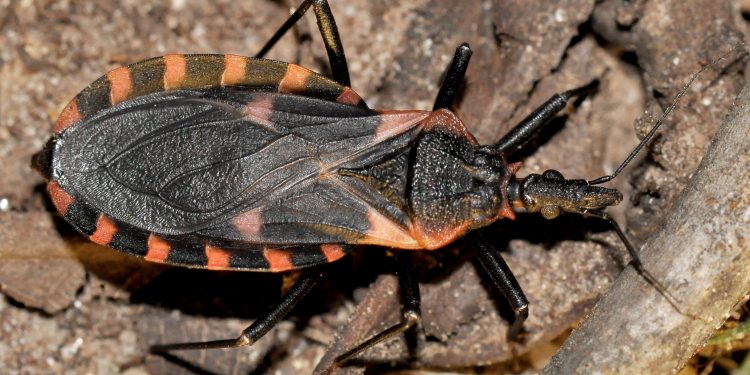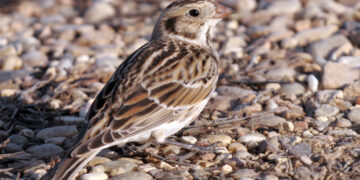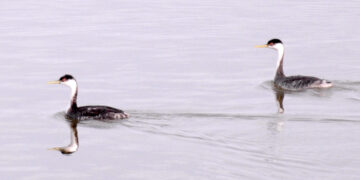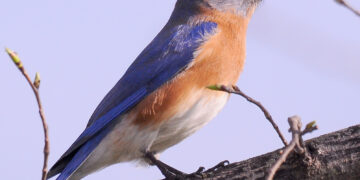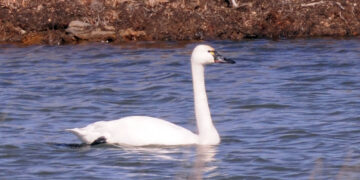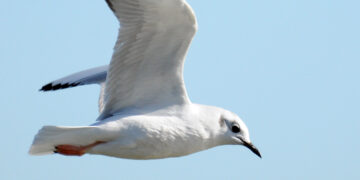The name “kissing bug” often strikes fear in people.
And, in certain parts of the world, that is understandable. However, in the United States, there’s really no need to spend too much time worrying about these insects. It would be like worrying about quicksand.
Remember quicksand? It seemed like half of all movies and TV shows in the 1960s and ’70s had someone falling into quicksand. As a kid, I was terrified of the stuff.
Turns out, it was something not worthy of my time.
It’s kind of the same thing with this week’s featured creature – the eastern bloodsucking conenose. It is an assassin bug, and belongs to the subfamily triatominae, known as kissing bugs.
Now, I’m not saying that these bugs are harmless, it’s just that the threat they pose in this country is not nearly as great as it is in Latin America. And there is much misinformation about kissing bugs on social media. Ah, social media, what would we do without it?
Not only have I seen people refer to all sorts of insect species as kissing bugs, but they make the situation in the United States sound so dire, when in fact it isn’t.
There are 11 kissing bug species in the U.S.; and Texas, New Mexico and Arizona have the widest species diversity.
And while the kissing bug is a known vector of Chagas disease – known as American trypanosomiasis in the U.S. – transmissions in this country are very rare.
Chagas disease is a much bigger problem in rural areas of Mexico, Central America and South America.
Now, when I say don’t worry too much, I’m not saying that it’s OK to mishandle these bugs or allow them to populate your home, which is rare in this country.
Information
Getting too technical is not something that I like to do as it can put readers to sleep, but for this column, I must do just that – get technical, not put you to sleep.
The Centers for Disease Control and Prevention reports that there are only a few cases of Chagas disease from contact with the bugs in this country that have been documented.
And, although there are more than 300,000 (possibly as many as 1 million) people with trypanosoma cruzi infection living in the U.S., the vast majority were infected in the parts of Latin America where Chagas disease is prevalent.
I’ve seen a website which warned about the dangers of kissing bugs, asking, “Did you know there are over 300 people living with Chagas disease in the United States?”
Then the website failed to mention the other part. To me, that’s irresponsible. Fearmongering, I believe.
The conenose
Assassin bugs are considered quite beneficial as they eat other insects which many people consider pests. However, whereas most assassin bugs eat insects and spiders, the eastern bloodsucking conenose requires blood meals to survive and reproduce. So, they feed on warm-blooded animals. And this is where the problem occurs between them and humans.
People don’t get Chagas disease from the bite of a conenose bug. Where the disease is prevalent, the bugs often defecate near the bite site, then, upon waking, a person scratches the site and feces infected with the parasite Trypanosoma cruzi gets into the bloodstream of the victim.
The main carrier of the parasite in Chagas-endemic areas is the species Triatoma infestans.
The eastern bloodsucking conenose (triatoma sanguisuga) does not defecate while feeding, which is probably one reason why trypanosomiasis is not a bigger problem in the U.S. Another reason is good sanitation and tight building construction tends to limit conenose bug infestations.
Chagas disease thrives in impoverished places where mud walls and thatched roofs are common. Kissing bugs typically feed at night, and they can easily enter poorly constructed dwellings.
Appearance
The adult eastern bloodsucking conenose is nearly an inch in length. It is a true bug, so it has the common true bug shape.
It is mostly black with reddish-orange coloring on various parts of the body. The abdomen has six reddish-orange spots on each side.
The head is elongated and cone-shaped, hence the name.
Range
The eastern bloodsucking conenose’s range includes all of Oklahoma and much of the eastern half of the U.S.
Diet
Hosts include wild animals, dogs and humans. Wild animals include raccoons, bats, foxes, armadillos, coyotes, mice, skunks, woodrats, etc.
I would think that livestock would be a good source of blood for these insects, but I haven’t found anything that would corroborate that thought.
A future column about these insects and any updates on American trypanosomiasis is a must, so I will continue to follow any new research.
Odds and ends
• The CDC reports that Chagas disease is named after the Brazilian physician Carlos Chagas, who discovered the disease in 1909.
• Eastern bloodsucking conenoses typically feed at night and are attracted to artificial lights. If lights are located near the openings of homes – such as doors – one might get inside occasionally.
• If you find a conenose in your home, work, car, etc., don’t smash it, lest you expose yourself to the parasite, or smear it onto a surface. I would recommend relocating the insect to the outdoors without using a container of some sort.
Editor’s Note: Randy Mitchell is a freelance writer and photographer. He has been an avid birdwatcher, nature enthusiast and photographer for more than 40 years. Reach him at rnw@usa.com.
Want to reach a local audience and grow your business?
Our website is the perfect platform to connect with engaged readers in your local area.
Whether you're looking for banner ads, sponsored content, or custom promotions, we can tailor a package to meet your needs.
Contact us today to learn more about advertising opportunities!
CONTACT US NOW